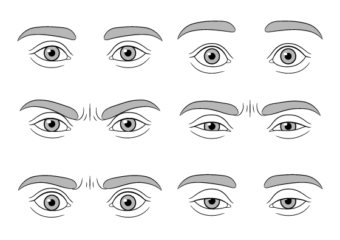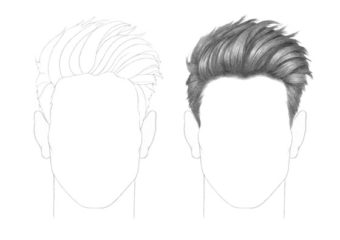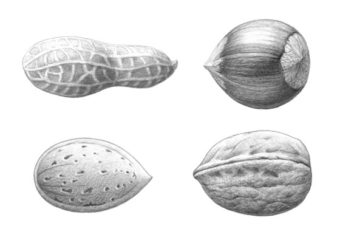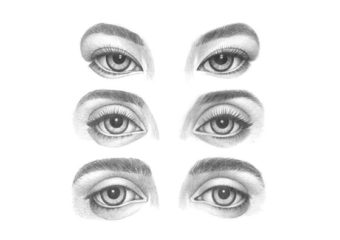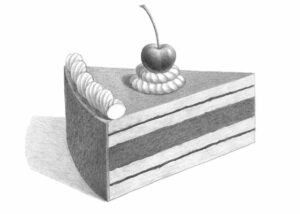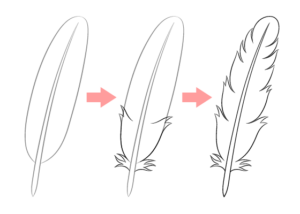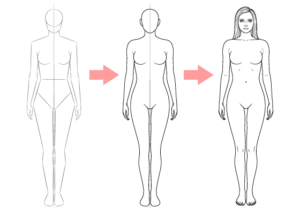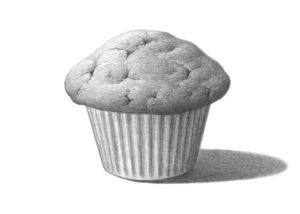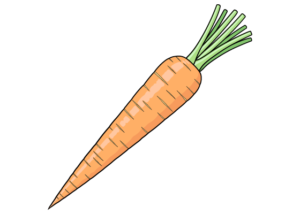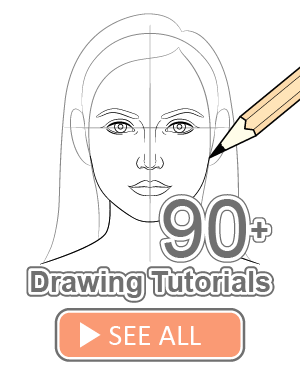Perspective Drawing Tutorial for Beginners
This tutorial explains perspective drawing including one, two and three point perspective. It also provides several illustrated examples of each.
Perspective is objects getting smaller as they go farther off into the distance. The point at which the objects completely disappear from the view is called the vanishing point.
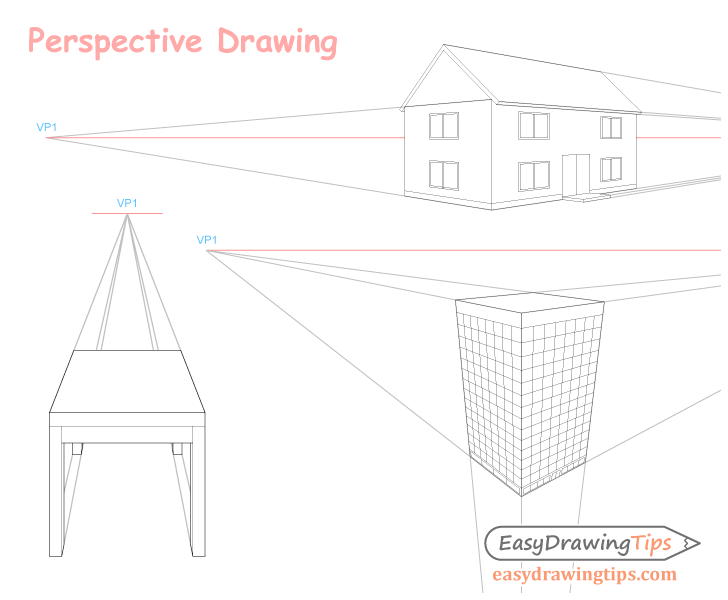
In one and two point perspective the vanishing points are located on the horizon line also known as the eye level (red line in the examples). In three point perspective two of the points are located on the horizon line with one usually being above or below it.
The horizon line or eye level is the position of the viewers eyes in relation to the scene in the picture (if the viewer was actually there). For example if you were to take a picture with a camera the eye level would roughly be the position of the camera.
Please note that for the sake of the tutorial some objects are drawn as “see through” with the hidden lines being shown in blue.
One Point Perspective Drawing
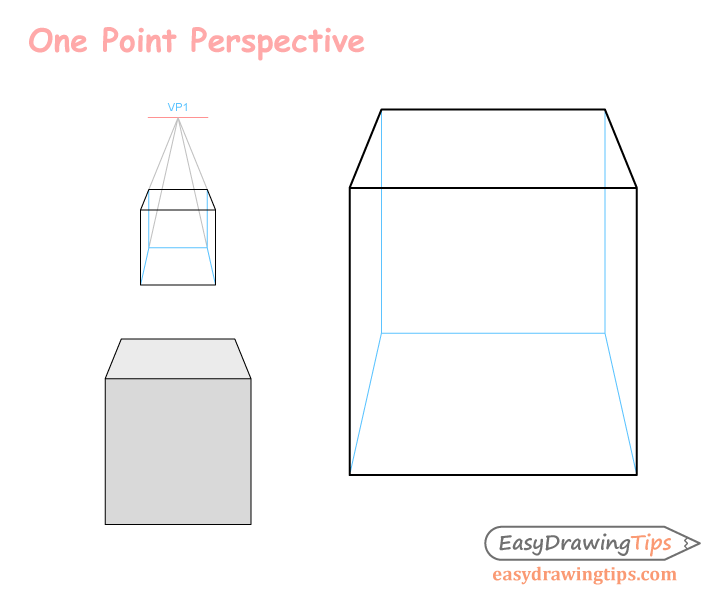
One point perspective is best used for drawing objects that are facing directly towards the viewer. It has one vanishing point located on the horizon line.
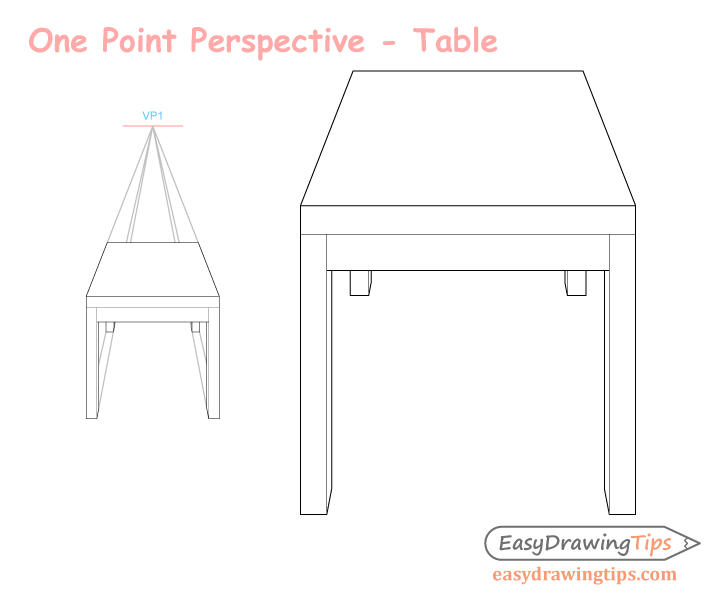
As already mentioned one point perspective is often used for objects that are facing directly towards the viewer like the table drawing in the above example.
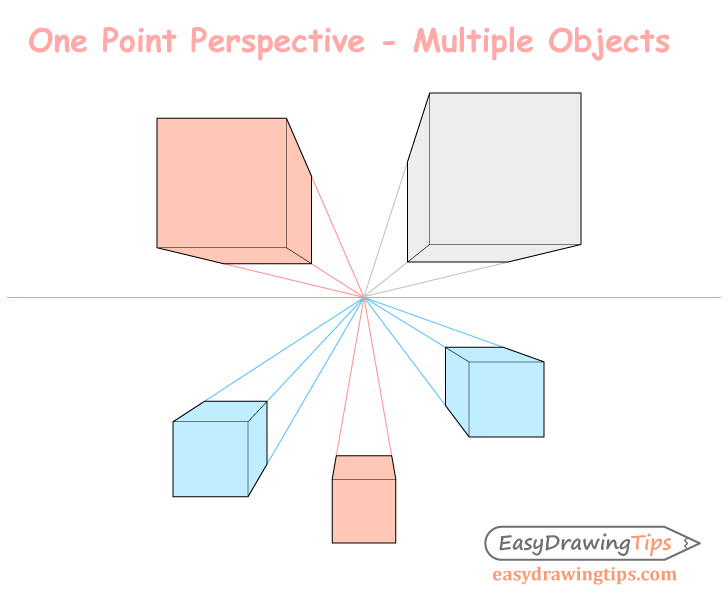
When drawing multiple objects in one point perspective they should all have the same vanishing point.
Two Point Perspective Drawing
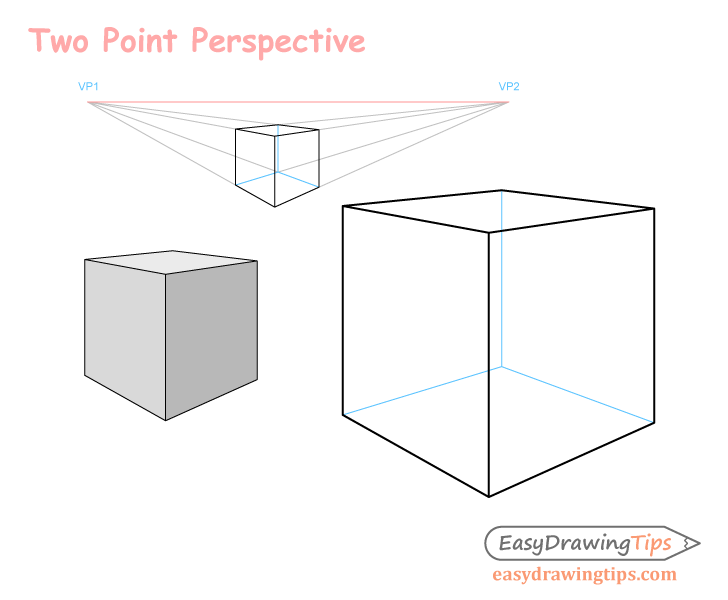
Two point perspective drawing is often used for objects that are facing the viewer at an angle. It has two vanishing points both of which are located on the horizon line.
When drawing in two point perspective be careful not to put the two vanishing points too close together or you can end up with a very distorted looking drawing.
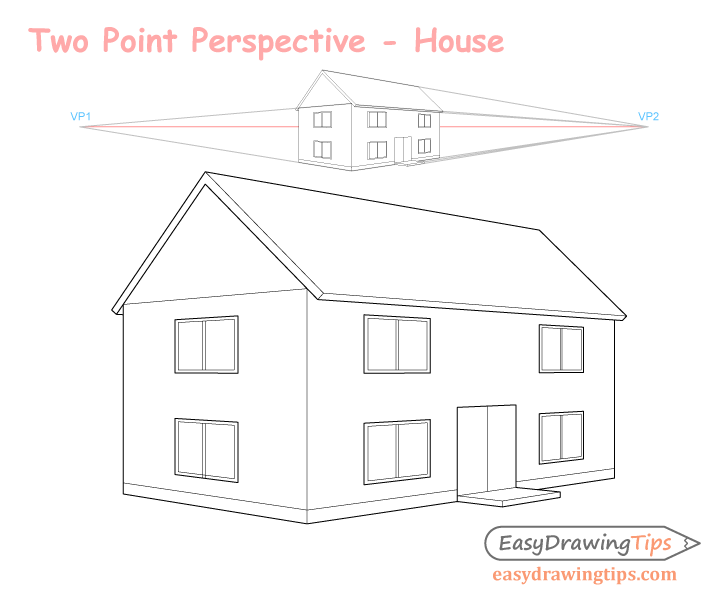
This is probably the most commonly used type of perspective. Two point perspective is good for drawing many objects and settings.
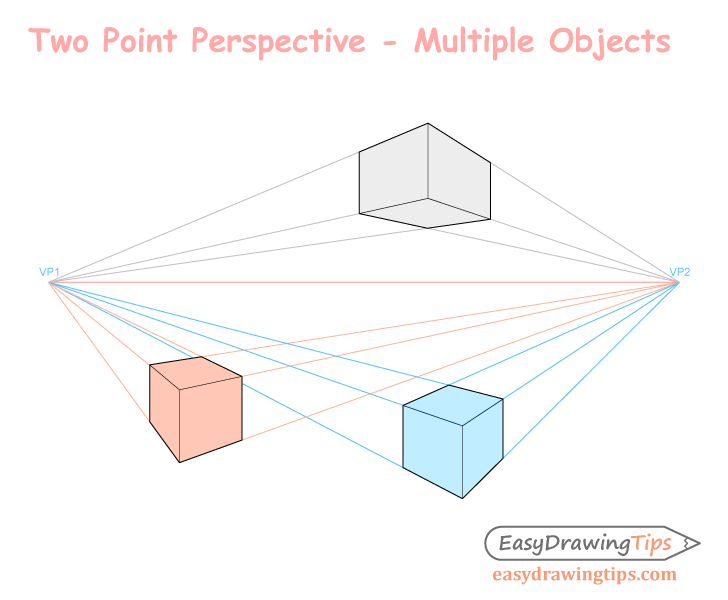
Drawing multiple objects in two point perspective can be a bit complicated as the perspective lines can overlap depending on the location of the objects. If you are planning to draw multiple objects it may be a good idea to first sketch their rough shape and then correctly structure them out one at a time with perspective lines. You can erase the liens or hide the if you are drawing digitally after you draw each object.
Three Point Perspective Drawing
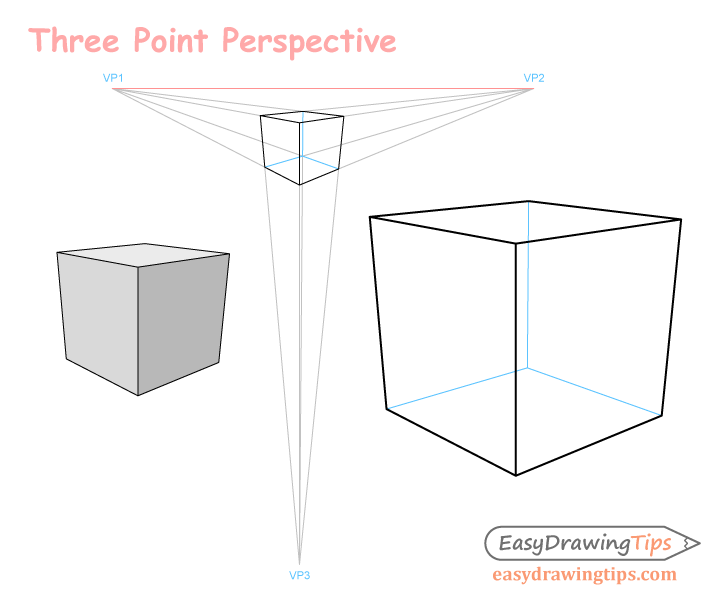
In three point perspective there are three vanishing points. As mentioned earlier in three point perspective only two of the vanishing points are drawn on the horizon. One vanishing point in a three point perspective drawing will usually be directly above or below the object.
Just as with two point perspective be careful to have proper distance between your vanishing points or your drawing can become too distorted.
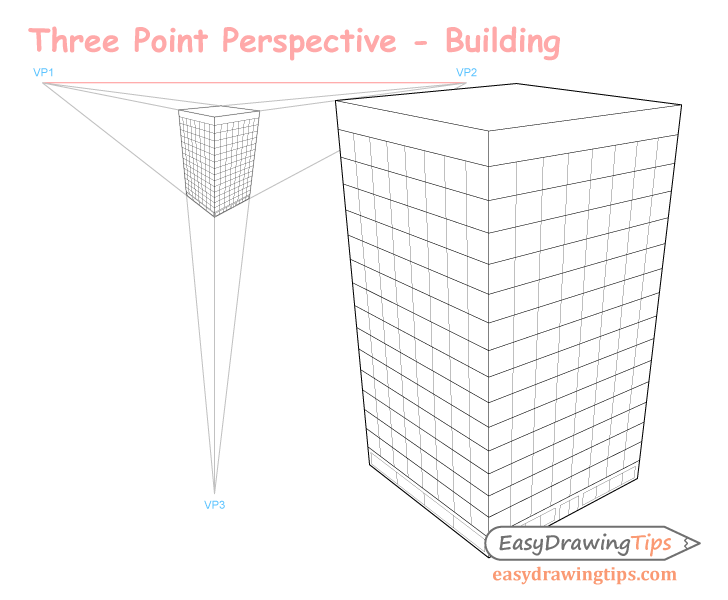
A common use of three point perspective is for drawing large objects such as buildings.
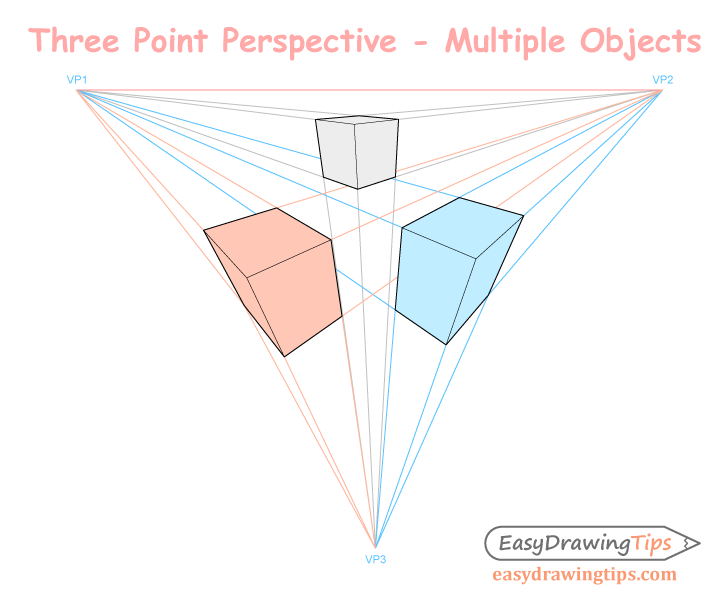
When drawing multiple objects in three point perspective it may again be a good idea to first roughly sketch out the location of each one and then draw perspective lines to one object at a time to avoid clutter and confusion.
Eye Level & Perspective Drawing
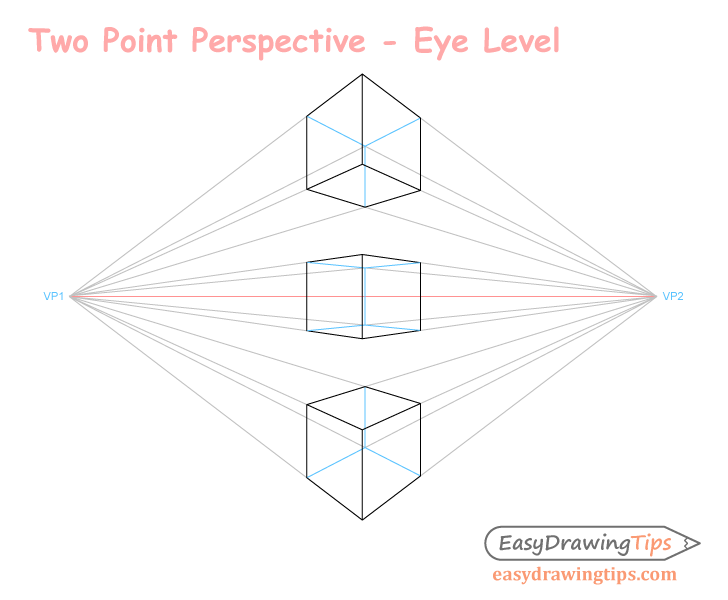
In the above example you can see the importance of eye level. Depending on the position of an objects it’s sides can appear as more stretched, compressed or become hidden. You can see that although the top and bottom planes of the shape are the same the bottom plane of the bottom shape appears larger than the top while the top shape is the reverse.
Conclusion
Perspective drawing can be a little hard to grasp if you are a beginner artist however with practice it will become natural to draw in perspective.
For more on perspective drawing see:
- How to Draw Cylinders in Perspective Tutorial
- How to Draw a Pyramid in One Point Perspective
- How to Draw a Pyramid in Two Point Perspective
- How to Draw a Cone in Perspective
- How to Draw a Book Step by Step
- How to Draw a Phone Step by Step
